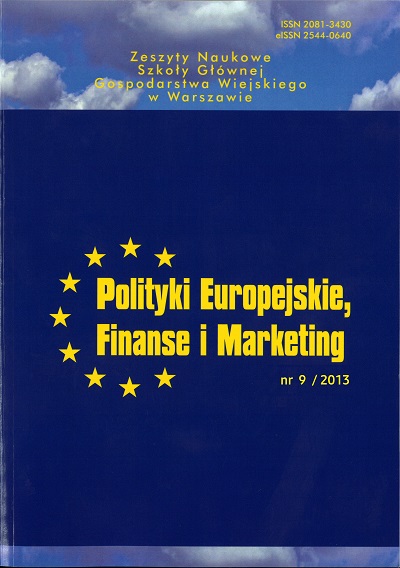Main Article Content
Article Details
Cenker E.M.: Public relations, Wydawnictwo WSB, Poznań 2002.
Child J.: Trust-The Fundamental Bond in Global Collaboration, Organizational Dynamics vol. 29, no. 4/2001, s. 274-288. (Crossref)
Cohen W.M., Levinthal D.A.: Absorptive Capacity: A New Perspective on Learning and Innovation, Administrative Science Quarterly vol. 35, no. 1/1990, s. 128-152. (Crossref)
Cornelissen J.: Komunikacja korporacyjna. Przewodnik po teorii i praktyce, Oficyna a Wolters Kluwer business, Warszawa 2010.
Donaldson B., O'Toole T.: Strategic Market Relationships, John Wiley & Sons, Chichester 2007.
Gulati R.: Does Familiarity Breed Trust? The Implications of Repeated Ties for Contractual Choice in Alliances, Academy of Management Journal vol. 38, no. 1/1995, s. 85-112. (Crossref)
Hartmann R.: Strategische Marketingplanung im Einzelhandel - Kritische Analyse spezifischer Planungsinstrumente, Deutscher Universitäts-Verlag, Wiesbaden 1992. (Crossref)
Huxham Ch., Vangen S.: Managing to collaborate, Routledge, New York 2006.
Sudolska A.: Uwarunkowania budowania relacji proinnowacyjnych przez przedsiębiorstwa w Polsce, Wydawnictwo UMK, Toruń 2011.
Trott P.: Innovation Management and New Product Development, Prentice Hall, Harlow 2008.
Walter A.: Technologietransfer zwischen Wissenschaft und Wirtschaft. Voraussetzungen für den Erfolg, Deutscher Universitäts-Verlag, Wiesbaden 2003. (Crossref)
Żyminkowski T.: Kształtowanie wizerunku banku, Wydawnictwo AE w Poznaniu, Poznań 2003.
Downloads
- Arkadiusz Artyszak, Changes in sugar beet production in the Kujawsko-Pomorskie voivodeship in 2002-2011 , The Scientific Journal European Policies, Finance and Marketing: No. 9(58) (2013)
You may also start an advanced similarity search for this article.

This work is licensed under a Creative Commons Attribution-NonCommercial 4.0 International License.
All articles published in European Policies, Finance and Marketing are fully open access. In this way, the scientific research results contained in articles published in our journal are available to every reader free of charge - in accordance with the CC BY-NC license (https://creativecommons.org/licenses/by-nc/4.0/).
According to the CC BY-NC license you are free to:
- Share — copy and redistribute the material in any medium or format
- Adapt — remix, transform, and build upon the material
The licensor cannot revoke these freedoms as long as you follow the license terms.
Under the following terms:
- Attribution — You must give appropriate credit , provide a link to the license, and indicate if changes were made . You may do so in any reasonable manner, but not in any way that suggests the licensor endorses you or your use.
- NonCommercial — You may not use the material for commercial purposes .
- No additional restrictions — You may not apply legal terms or technological measures that legally restrict others from doing anything the license permits.
Source: https://creativecommons.org/licenses/by-nc/4.0/deed.en
According to that, the authors retain the copyright and full publishing rights.





